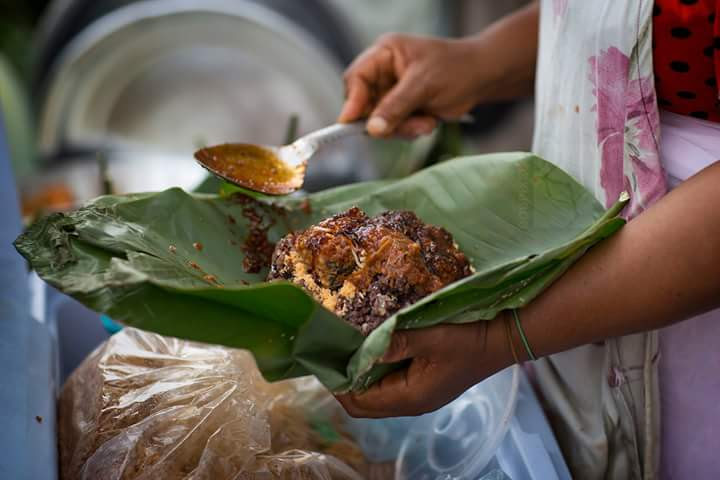Ghanaians are crazy about waakye, a local dish prepared by cooking rice and beans with red sorghum leaves. The leaves add
But the health benefits of eating waakye are poorly understood. Antioxidants can protect cells in the body from damage and are thought to help fight a range of illnesses like heart disease, cancer, and diabetes. However, antioxidant levels in food and their effects can be affected by cooking methods, and waakye is no exception.
In order to examine whether the antioxidants in the sorghum leaves survive cooking waakye, Edward Essuman, a food scientist at the University of Health and Allied Sciences in Ho, Ghana, tested waakye made using four different cooking methods. One sample was prepared without any red sorghum leaves at all. One was prepared with red sorghum leaves that had been soaked in water for 12 hours; in another, the red sorghum leaves were soaked overnight in water containing
The findings of their research were published in Scientific African in March 2019. Essuman and his colleagues found that waakye prepared with sorghum leaves had higher antioxidant levels than the sample prepared without showing that the sorghum leaves did indeed confer health benefits to waakye. The antioxidant levels were the highest in the waakye prepared with saltpeter, Essuman said. “The saltpeter helps retain all the nutrients in the food as compared to cooking without it.” But using too much saltpeter in waakye preparation might cause indigestion and should, therefore, be used sparingly, he and his colleagues warn.
To many waakye lovers in Ghana, the health benefits of the staple come as a surprise. Kafui Adzah is the owner of Waakye on Wheels, an online on-demand waakye delivery service that delivers in Greater Accra. She has sold waakye since
According to Essuman, waakye could be a cheap source of not only
